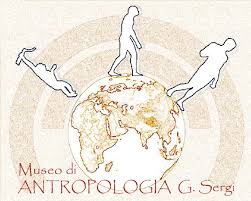

Anthropology was first taught at "La Sapienza" University of Rome in November 1884, and Giuseppe Sergi was appointed professor of this discipline: a philosopher, psychologist, anthropologist and teacher with multiple interests who had already taught at the University of Bologna. An initial nucleus of the museum was formed.
In 1887, the institute and the museum were permanently moved to the ancient building of the Collegio Romano, a former Jesuit convent a short distance from Piazza Venezia. The entrance was a small door on the first floor which opened out onto a long corridor with furniture and shelves arranged along both walls, containing anthropological and naturalistic collections dating back to various periods and from different locations: this corridor became the "gallery" of "La Sapienza" University of Rome Museum of Anthropology. The museum immediately was valued as an indispensable reference point and soon developed departments and collections that are a valuable heritage for the study of mankind in its different varieties, throughout its history and evolution. Between 1929 and 1935 the museum acquired its most precious artefacts: the Neanderthal crania of Saccopastore. In 1938, under the direction of Sergio Sergi, Giuseppe’s son and one of his first students, the Institute of Anthropology and its museum were moved to the recently constructed University City, where they are still located today. The museum is located in large premises on the second floor of the Psychology-Anthropology building.
http://www.musei.uniroma1.it/museodiantropologia/index.html
Since 1938 the museum has had a series of directors, each of them was determined to acquire new artefacts and collections: Giovanni Genna, Venerando Correnti, Massimo Cresta, Gabriella Spedini, Pietro Passarello. Today, the museum's director is Prof. Giorgio Manzi.
Today, the "Giuseppe Sergi" Museum of Anthropology is divided into three sections: one is dedicated to conservation, another one to laboratory activities and the third one to the display of artefacts to an audience coming from inside and outside the university domain. First opened in 1982, when the exhibition "The man of Saccopastore and his environment" was held to celebrate the important scientific discovery of the craniums of Saccopastore, discovered in Rome near Monte Sacro, in 1929 and 1935. Both craniums provide evidence of the presence of human life approximately 120,000 years ago.